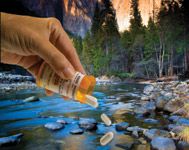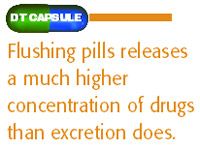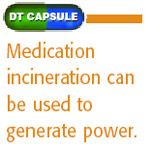Green solutions to drug disposal blues
Concerns over the drug diversion and the impact of pharmaceuticals on the environment converge as federal and health experts look for new models to control the impact of unused drugs.


Still, some remain skeptical about the sudden emphasis on drug disposal and question whether the new steps are worth the effort or are jumping to conclusions before the science is completely settled. "There are concentrations below which you cannot demonstrate a toxic effect," insisted John Fisher III, Pharm.D., director of the Alabama Poison Center. "A lot of drugs are going to end up in the sewer anyway. What are we going to do in that case? When you take a look at the contribution of medication disposal, I think it is a drop in the bucket."
Prescription drugs are showing up in our water systems, though the long-term impact is not well understood. Beginning in the 1990s, the Environmental Protection Agency (EPA) started to examine the occurrence of certain pharmaceuticals and personal care products (PPCPs) in the environment. Since then, EPA, the U.S. Geological Survey (USGS), and the U.S. Fish & Wildlife Service (USFWS) have found the existence of a broad range of unexpected compounds in the water, including caffeine, acetaminophen, erythromycin, fluoxetine, and albuterol.
In one study, USGS scientists reported that exposure to the treated wastewater from a major metropolitan sewage treatment plant caused endocrine disruption in male fathead minnows. After exposure to the wastewater, the male minnows started producing a female egg-yoke protein. In another study, conducted in a test lake in Canada where other toxic factors were removed, exposure to just five parts per trillion of the synthetic estrogen hormone ethynylestradiol caused the entire fish population to collapse.

Little is also known about the impact of trace amounts of contaminations on humans or animals. Also of concern is the very real potential for additive effects or possibly interactive effects that may occur from complex mixtures of PPCPs in the environment.
Another key issue scientists are trying to determine is the relative impact of patients' disposal of these products. EPA is currently undertaking a study to examine how much patient disposal contributes to the overall problem. Various portions of all drugs, ranging from aspirin to birth control hormones, are excreted by patients and end up in the water supply. According to Daughton, the amount excreted can range from "almost nil to nearly 100%."
Veterinary medicine is another significant source of contamination-especially for antibiotics and growth hormones.